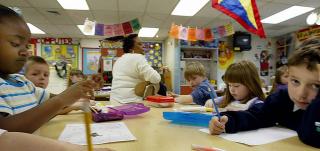
Working Paper:
ISSN:
After the 2016 Scottish General Election, the Scottish Government put school education right at the top of its policy agenda, aiming to close the attainment gap between young people from less and more disadvantaged neighbourhoods. But by the summer of 2018, its flagship Education Bill had been shelved and, in the intervening period, the initially central policy focus on place-based disadvantage had faded away. This was a disappointing result for what had seemed like a very promising new direction for education reform in Scotland.
Against the context of policy in Scotland towards secondary schooling, this paper explores what is known about educational disadvantage and place in Scotland. The broad evidence shows wide attainment differences between young people who live in neighbourhoods at different points on the deprivation rank, but there is little understanding of whether place-based factors, social class differences, or differences in school effectiveness that are most influential. This is important, because each factor requires a different approach to closing the gap. Particularly with regards to place-based attainment gaps, the international evidence shows that schooling is context-derived as well as context- generative, i.e. there is a dynamic relationship between schools and places. However, understandings of ‘the spatial school system’ and its role in accentuating educational disadvantage in Scotland, are lacking.
The paper makes proposals about how the attainment gap might be better defined and it interrogates the uncertain progress of the ‘closing the gap’ policy, its cloudiness over the nature of the gap, and disjunctures between the means and ends. The paper observes that attention to the place-based attainment gap was an important initiative but it partly foundered due to lack of evidence about the nature and causes of the gap.
The paper welcomes the direction of travel towards a new series of indicators about the attainment gap, with caveats about maintaining a strong place focus. The emerging proposal that the government will develop a new index of social background is also an essential underpinning of any policy that claims to challenge disadvantage. In the meantime, more could be done with existing data if it were to be analysed at individual pupil level in order to better unscramble the influences of places, schools and family background on educational attainment.
Nike sneakers | nike fashionCitation:
Keywords:
Discussion topics:
- Log in to post comments














Latest Comments